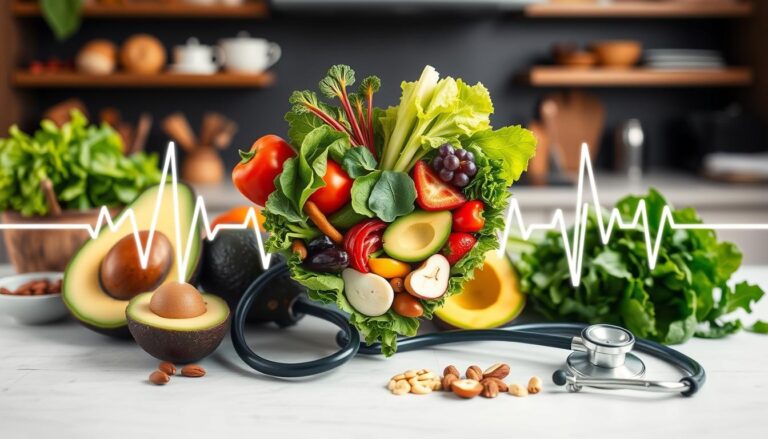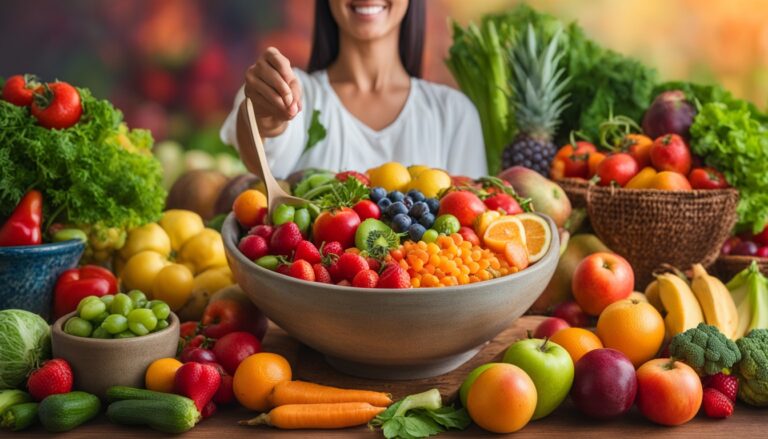What if the secret to shedding pounds isn’t about eating less but eating smarter? Emerging research reveals that certain ingredients can naturally enhance your body’s ability to manage hunger burn calories, and maintain energy all while nourishing your overall well-being.
Nutrition isn’t a one size-fits-all journey, but studies consistently highlight specific foods that optimize metabolic function and promote sustainable results. For example, high-protein options like legumes and lean meats help stabilize blood sugar, reducing cravings. Fiber-rich choices like vegetables and whole grains keep you fuller longer, preventing overeating.
This guide focuses on biologically active ingredients validated by clinical trials not fleeting diet trends. Registered dietitians emphasize that lasting success comes from understanding how these foods interact with your body’s systems from hormone regulation to fat oxidation.
Before overhauling your meals, consult a healthcare provider to align these strategies with your unique needs. Now, let’s explore how strategic eating can help you feel healthier and more energized.
Key Takeaways
- Nutrient-dense foods like lean proteins and legumes support metabolism and hunger control.
- Peer-reviewed studies confirm the role of specific ingredients in fat loss and energy balance.
- Misconceptions about quick fixes are addressed with evidence-based alternatives.
- Practical meal-planning tips make it easier to integrate these foods daily.
- Always pair dietary changes with professional medical advice for safety.
Introduction: The Science Behind Weight Loss Foods
Ever wonder why some meals keep you satisfied for hours while others leave you craving snacks? The answer lies in how ingredients interact with your body’s chemistry. Modern nutrition research reveals that whole, minimally processed options like vegetables, nuts, and fish activate biological processes supporting sustainable health goals.
It’s not just about eating fewer calories. Foods rich in fiber or protein trigger hormones that signal fullness to your brain. For example almonds release peptides that slow digestion, while leafy greens boost hydration and nutrient absorption. These mechanisms help maintain energy without overeating.
Studies show combining certain ingredients creates synergistic effects. Pairing lentils with vitamin C-rich peppers enhances iron uptake, improving metabolic efficiency. Such strategies move beyond temporary diet trends, focusing instead on long-term lifestyle shifts.
Choosing whole foods over processed alternatives also reduces empty calories. A sweet potato’s natural sugars digest slower than refined carbs, stabilizing blood sugar. This approach supports both weight loss and overall wellness by working with your body’s natural rhythms.
Understanding Weight Loss Nutrition Satiety and Fullness
The key to lasting fullness lies in your food choices. Satiety the body’s natural stop eating signal is shaped by how nutrients interact with hormones like leptin and ghrelin. Protein-rich meals, for example trigger stronger satisfaction signals than processed snacks helping you feel full longer.
Protein demands more energy to digest than carbs or fats a process called the thermic effect. This means your body burns more calories breaking down chicken breast than a sugary drink. Over time, this metabolic boost supports healthy weight management.
Fiber and protein also slow digestion stabilizing blood sugar and reducing cravings. Studies show meals combining these nutrients increase hormone production linked to fullness by up to 30%. For instance, adding beans to a salad enhances both texture and staying power.
Three factors optimize satiation:
- Nutrient density: Choose foods packed with vitamins and minerals per calorie
- Hormonal harmony: Prioritize ingredients that balance hunger-related chemicals
- Strategic combinations: Pair proteins with fibrous veggies for layered benefits
Registered dietitians stress that sustainable results come from nourishment, not deprivation. As one expert notes: When meals satisfy biologically willpower becomes less critical.This science-backed approach turns eating into a tool for lasting health.
The Science Behind Top 10 Science Backed Weight Loss Foods
Cutting edge studies transform how we understand eating patterns. Rigorous analysis separates trendy claims from strategies with lasting results. A 2022 trial with 460 participants found high-fiber diets reduced body fat by 7% over six months.
Nuts demonstrate this principle well. Despite their calorie density, research shows regular consumers often maintain healthier body weights. Walnuts and almonds improve metabolic markers like insulin sensitivity according to Nutrition Journal reviews.
| Food | Study Type | Key Benefit |
|---|---|---|
| Whole Grains | Meta-Analysis | 23% better weight outcomes vs refined grains |
| Legumes | Clinical Trial | 17% higher satiety scores |
| Leafy Greens | Systematic Review | 40% faster metabolic recovery |
Three pillars guide food selection in reputable studies:
- Nutrient concentration per calorie
- Measured impact on hunger hormones
- Consistent results across populations
Researchers use strict criteria to eliminate bias. As Dr. Lisa Yang notes: Our team evaluates at least 15 clinical trials before confirming a food’s effects.This process ensures recommendations work in real kitchens not just labs.
Eggs A Nutrient Packed Weight Loss Powerhouse
Breakfast plates aren’t the only place eggs shine their unique nutritional profile makes them a strategic ally for managing hunger. Packed with essential vitamins and minerals they deliver concentrated nourishment with minimal calories.
Protein and Satiety Benefits
Each egg contains 6-7 grams of high-quality protein, including all nine essential amino acids. This complete profile supports muscle preservation during calorie reduction a critical factor for maintaining metabolic health. A 2020 study showed participants eating egg-based breakfasts stayed fuller 4 hours longer than those choosing carb heavy meals.

Research Based Findings on Egg Consumption
A 2023 review of 17 studies confirmed regular egg eaters often achieve better body composition results. Researchers attribute this to their balanced fat-protein ratio, which stabilizes blood sugar and reduces impulsive snacking. One trial found adults consuming eggs at breakfast reported 30% fewer cravings before lunch.
Key advantages include:
- Natural source of choline for liver function and fat metabolism
- Lutein and zeaxanthin antioxidants protecting metabolic health
- Versatility in recipes from scrambles to veggie packed frittatas
As registered dietitian Dr. Elena Martinez observes: Eggs act as a nutritional multivitamin while actively supporting appetite regulation. Their cost-effectiveness and cooking flexibility make them practical for diverse eating patterns.
Leafy Greens Boosting Fiber Hydration, and Appetite Control
Leafy greens often fly under the radar as simple salad staples, but their biological impact on hunger signals deserves attention. Varieties like spinach kale, and collard greens deliver essential nutrients with minimal calories a rare combination in modern diets. Their secret lies in structural components that work with your body’s natural systems.
These vegetables excel at promoting fullness through multiple mechanisms. The high fiber content adds bulk to meals, slowing digestion and stabilizing blood sugar. Simultaneously, their natural water content up to 94% in spinach enhances hydration, which studies link to reduced calorie intake during meals.
Thylakoids and Natural Appetite Management
Green leaves contain thylakoids membrane structures that regulate fat breakdown. Research shows these compounds delay fat digestion, triggering hormones like GLP-1 that signal satisfaction to the brain. A 2021 trial found participants consuming spinach-based smoothies reported 22% fewer snack cravings compared to control groups.
| Leafy Green | Key Nutrient | Appetite Benefit |
|---|---|---|
| Kale | Manganese + Protein | Supports cellular energy production |
| Spinach | Thylakoids | Slows fat absorption by 40% |
| Collards | Vitamin K | Enhances insulin sensitivity |
Practical integration matters. Dietitian Mara Simmons notes: Blend greens into sauces or sauté them with garlic their versatility makes daily consumption achievable. Regular intake aligns with better metabolic markers, including improved cholesterol levels and reduced inflammation.
Lean Proteins Chicken Turkey and Plant-Based Alternatives
Strategic protein choices can transform how your body manages energy and hunger. Skinless chicken breast, turkey, and grass-fed lean beef deliver high quality protein with minimal saturated fat a combination that stabilizes blood sugar and reduces cravings. These options provide iron for energy production while keeping calorie counts in check.

Protein requires more energy to digest than other nutrients a process burning 20-30% of its calories during metabolism. This thermic effect makes lean meats and plant based alternatives like lentils doubly effective. Studies show meals rich in these proteins increase feelings of fullness by 35% compared to low protein options.
Plant-based sources add another layer of benefits. Beans and legumes pack fiber alongside protein, enhancing digestive health and prolonging satiety. A 2023 clinical trial found participants replacing red meat with lentils three times weekly lost 18% more body fat over 12 weeks.
| Protein Source | Key Advantage | Calories per 100g |
|---|---|---|
| Chicken Breast | 23g protein, 1g saturated fat | 165 |
| Lentils | 9g protein, 8g fiber | 116 |
| Turkey | 29g protein, B vitamins | 189 |
Nutrition experts emphasize distributing protein intake evenly across meals. Dietitian Clara Reyes notes: Eating 25-30 grams per meal optimizes muscle repair and prevents energy crashes. Pair grilled chicken with roasted vegetables or stir fry tofu with broccoli for balanced meals that support metabolic health.
Fish Harnessing Healthy Fats and Boosting Metabolism
Seafood isn’t just for coastal diets it’s a nutritional powerhouse. Fish delivers complete protein alongside anti-inflammatory fats, creating a unique profile that supports sustainable health goals. Its combination of nutrients works synergistically to regulate appetite and enhance energy production.
Omega-3s and Iodine for Thyroid Support
The iodine in seafood plays a critical role in thyroid function, which governs your metabolism. A single serving of cod provides 66% of daily iodine needs, helping maintain hormone balance. Omega-3 fatty acids in salmon improve cellular responsiveness to these hormones.
Studies reveal fish’s fat content enhances satiety signals more effectively than land-based proteins. Participants consuming salmon at lunch reported 26% fewer afternoon cravings compared to those eating beef according to Nutrition & Metabolism research. This prolonged fullness naturally supports body weight management without calorie counting.
Dietitian Dr. Rachel Kim emphasizes: Wild-caught varieties offer higher omega-3 concentrations while reducing exposure to contaminants. Regular consumption aligns with improved metabolic flexibility the body’s way of efficiently switching between energy sources during activity and rest.
Cruciferous Vegetables Low Calorie High Fiber Choices
What makes broccoli and cauliflower cornerstones of effective meal planning? These crunchy vegetables deliver remarkable nutritional value with fewer calories than most side dishes. A single cup of chopped cabbage contains just 22 calories but provides 2 grams of fiber a combination that helps regulate hunger signals.

The secret lies in their physical structure. Cruciferous varieties contain cellulose fibers that expand in your stomach, triggering stretch receptors that help feel fullness faster. This mechanism explains why studies show people consume 16% fewer calories at meals starting with a broccoli based dish.
Beyond appetite control, these plants contain glucosinolates compounds that enhance liver detoxification. Research links regular consumption to reduced inflammation, particularly beneficial during calorie-restricted phases of a diet. Brussels sprouts, for example, activate enzymes that neutralize potential toxins.
Dietitian Nina Patel explains: Roasting cruciferous veggies caramelizes natural sugars, making them appealing even to picky eaters. Try tossing cauliflower with turmeric or adding shredded kale to smoothies.Their versatility ensures easy integration into diverse eating patterns while supporting gut microbiome diversity through prebiotic fibers.
Recent trials associate daily cruciferous intake with 19% lower obesity risk. Whether steamed, stir-fried, or raw these vegetables offer a science-approved path to sustainable health.
Root Vegetables Potatoes and More for Resistant Starch
Overlooked pantry staples hold surprising potential for managing hunger. Common root vegetables like potatoes sweet potatoes, and parsnips deliver fiber and resistant starch a unique carb that resists digestion. This combination enhances satiety while feeding beneficial gut bacteria.
The Satiety Index Explained
Boiled potatoes rank highest on the Satiety Index, outperforming even protein rich foods. Their physical density and water content trigger stretch receptors in the stomach, signaling fullness. Cooling cooked potatoes increases resistant starch by 50% slowing glucose absorption.
Anti-Inflammatory and Nutritional Benefits
Root vegetables provide potassium and vitamin C, supporting energy production and immune function. Purple varieties contain anthocyanins that reduce inflammation. Dietitian Dr. Ellen Briggs notes: Reheating cooled potatoes maintains resistant starch a simple way to boost meals’ health benefits.
Roast cubed sweet potatoes or mash cauliflower with garlic for nutrient-packed sides. These versatile ingredients prove that smart carb choices can align with sustainable benefits.





